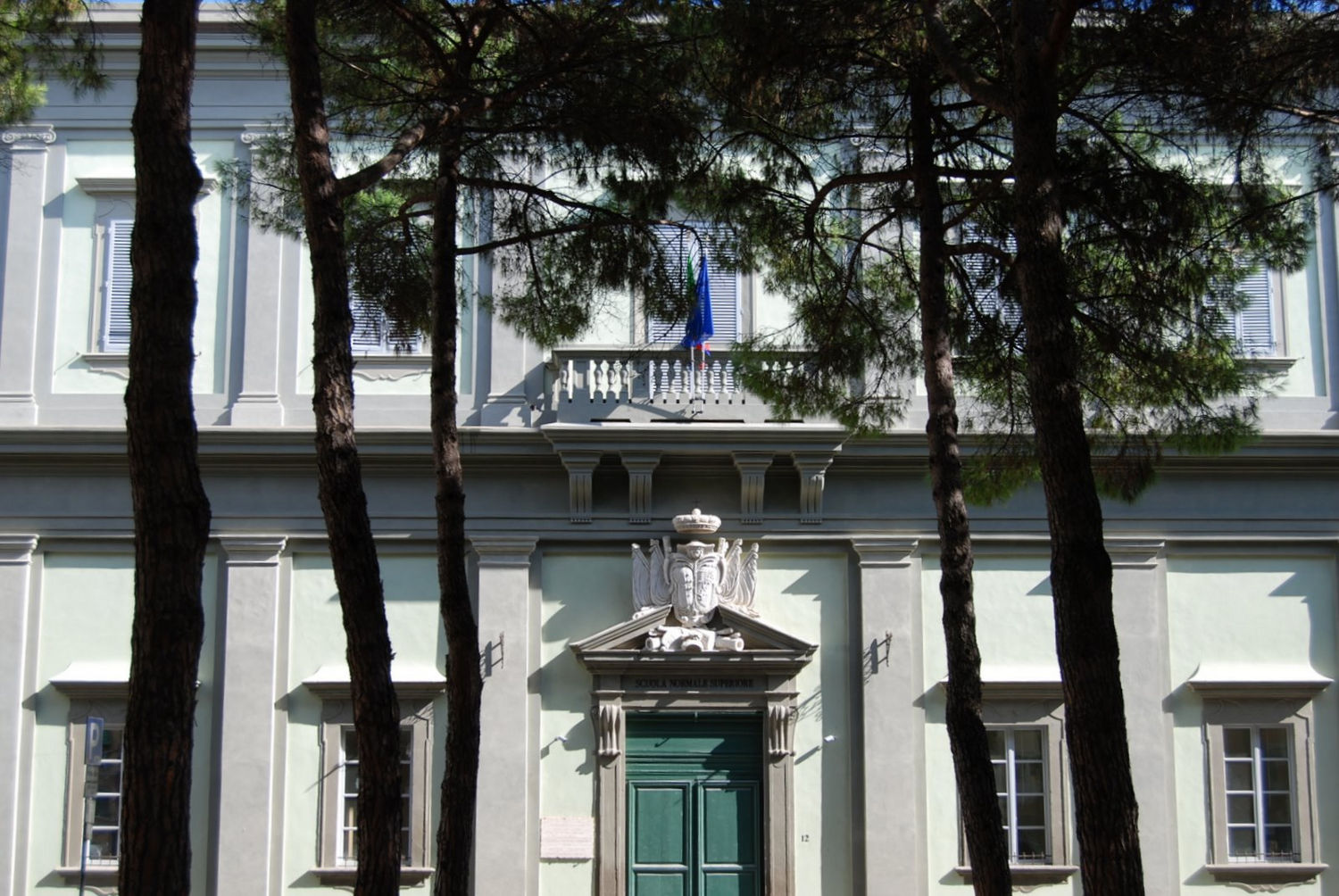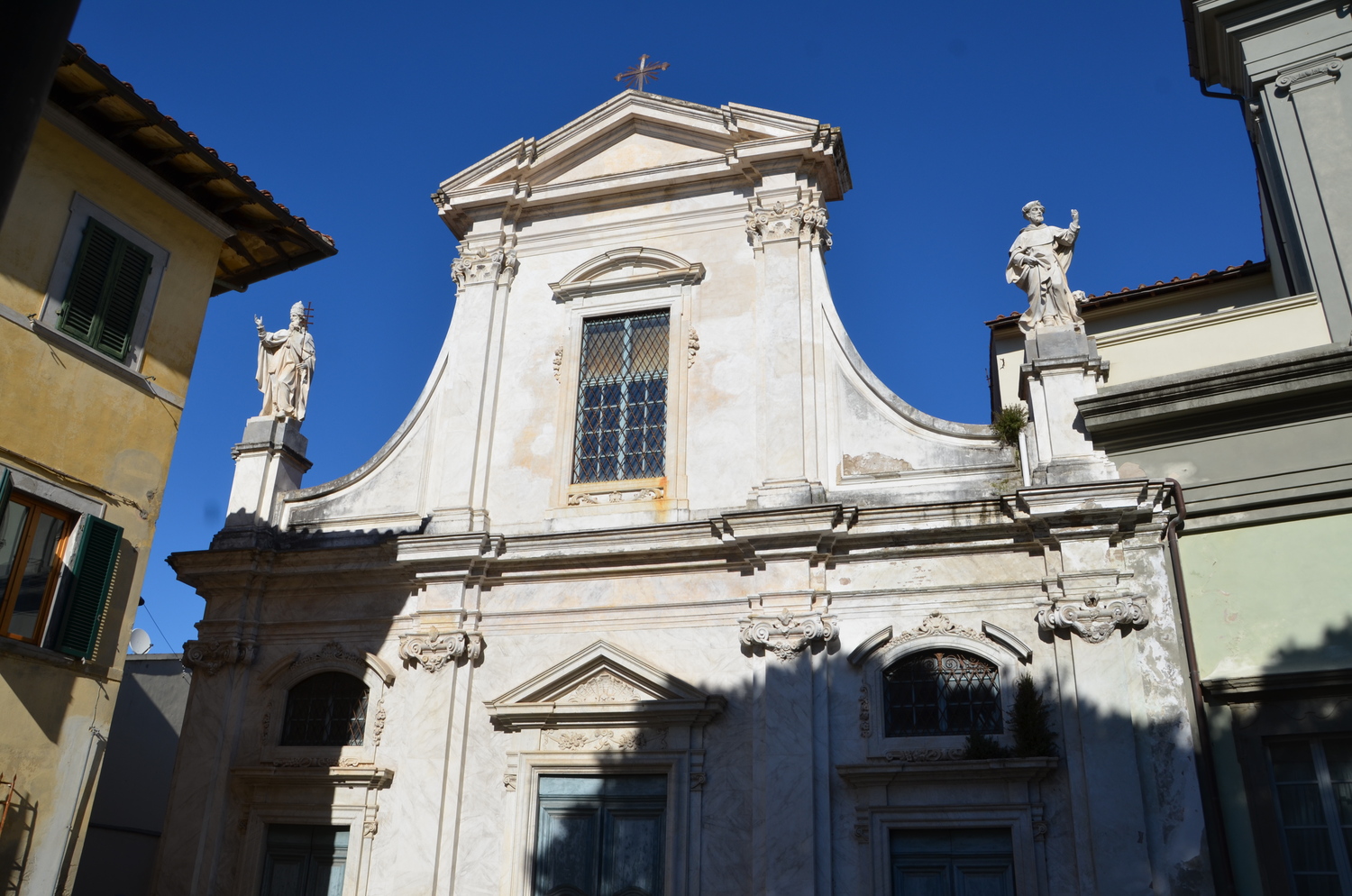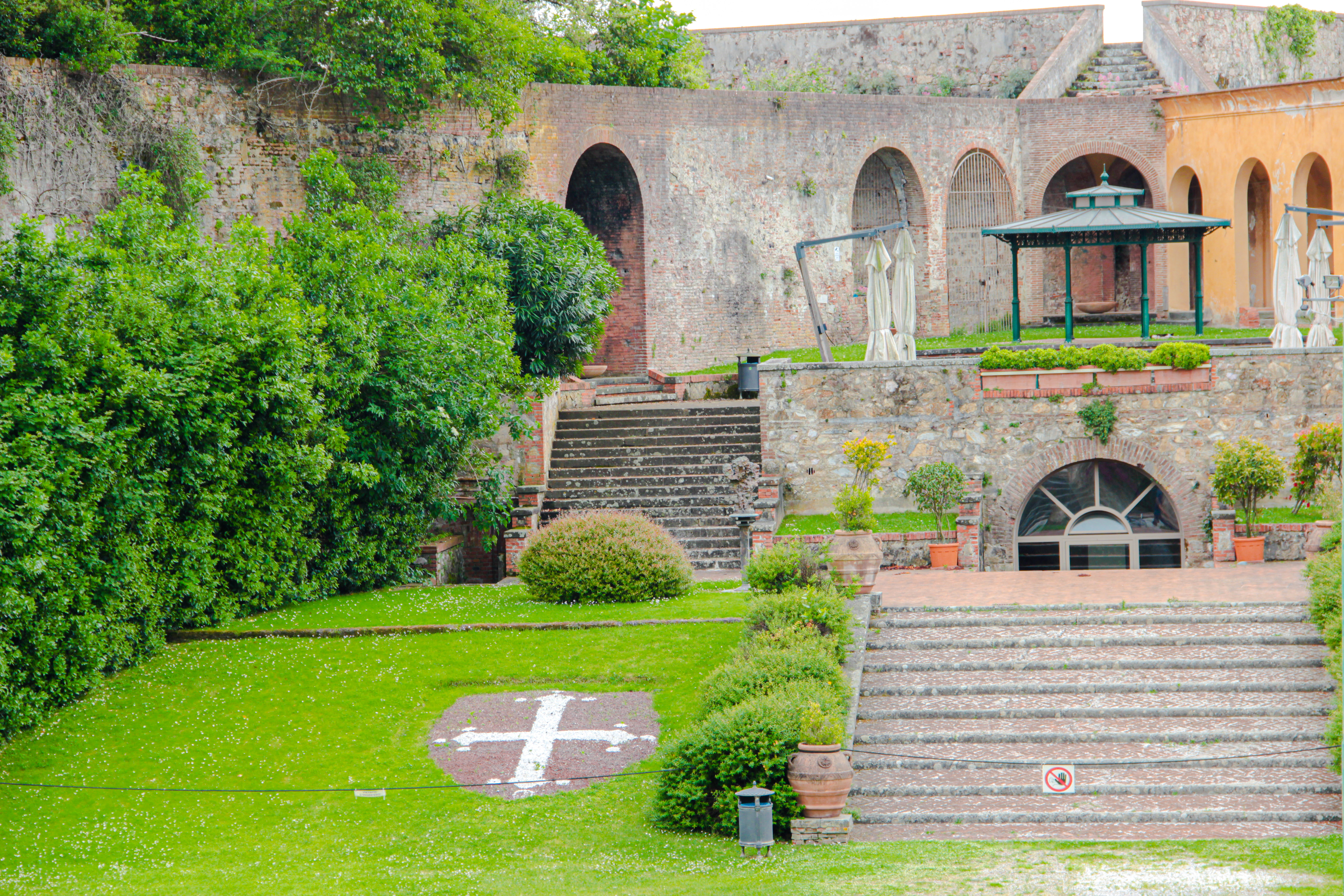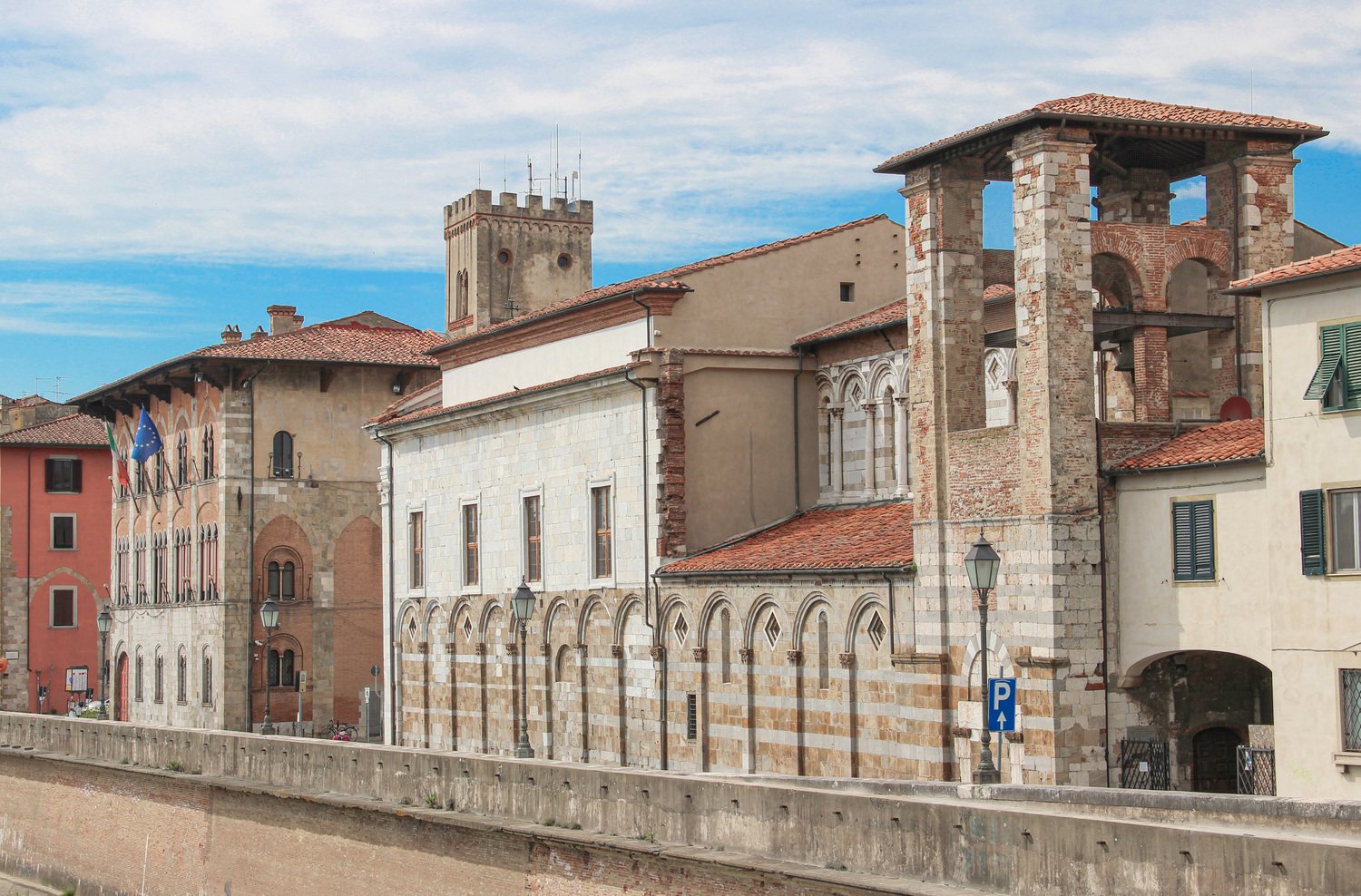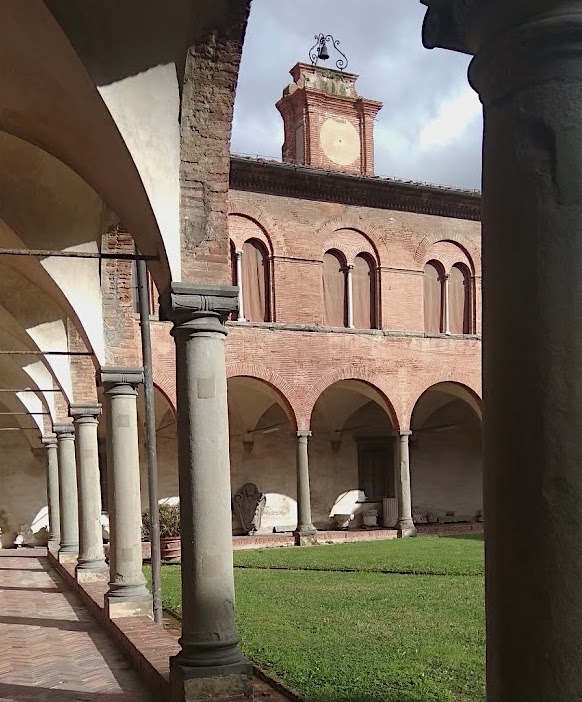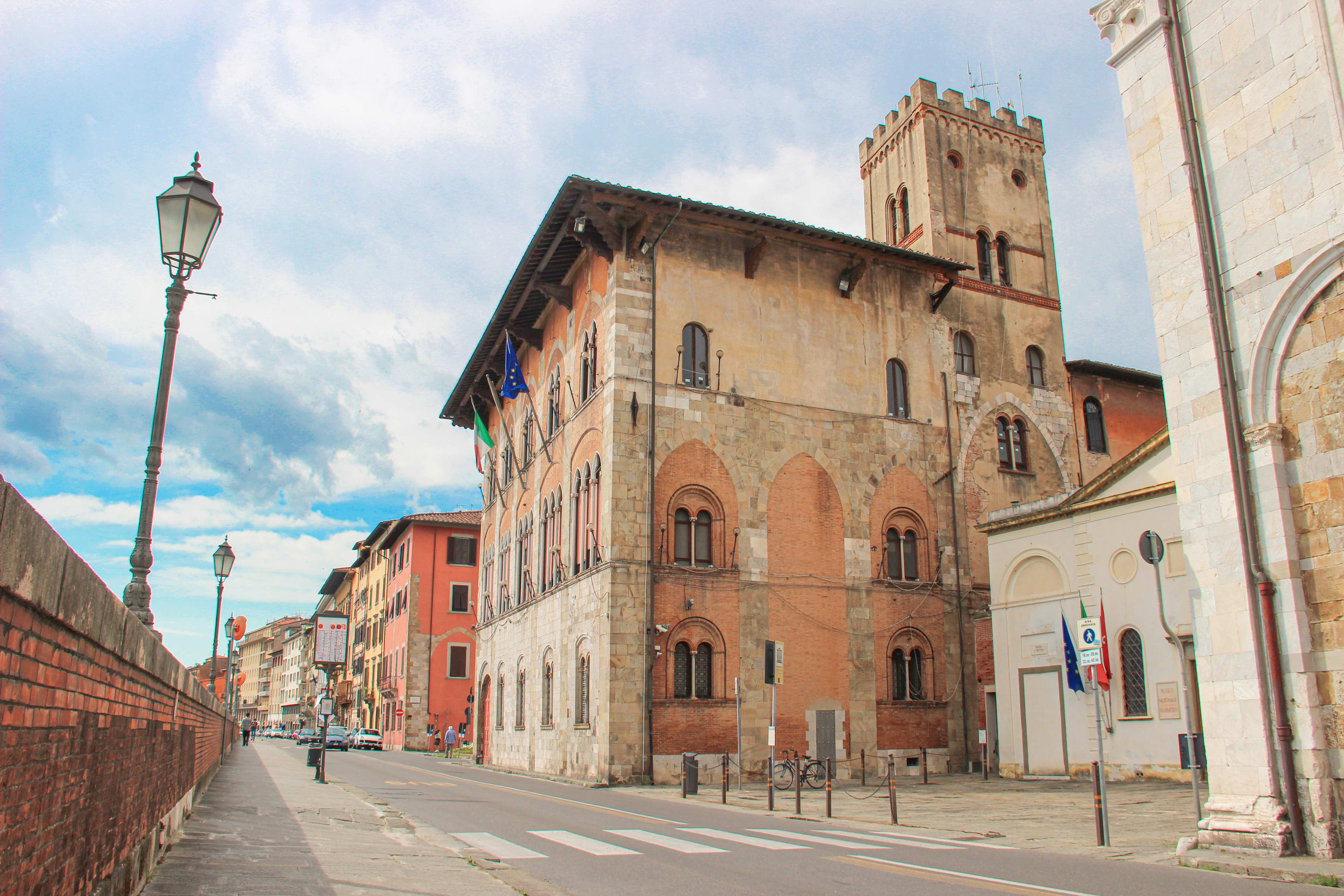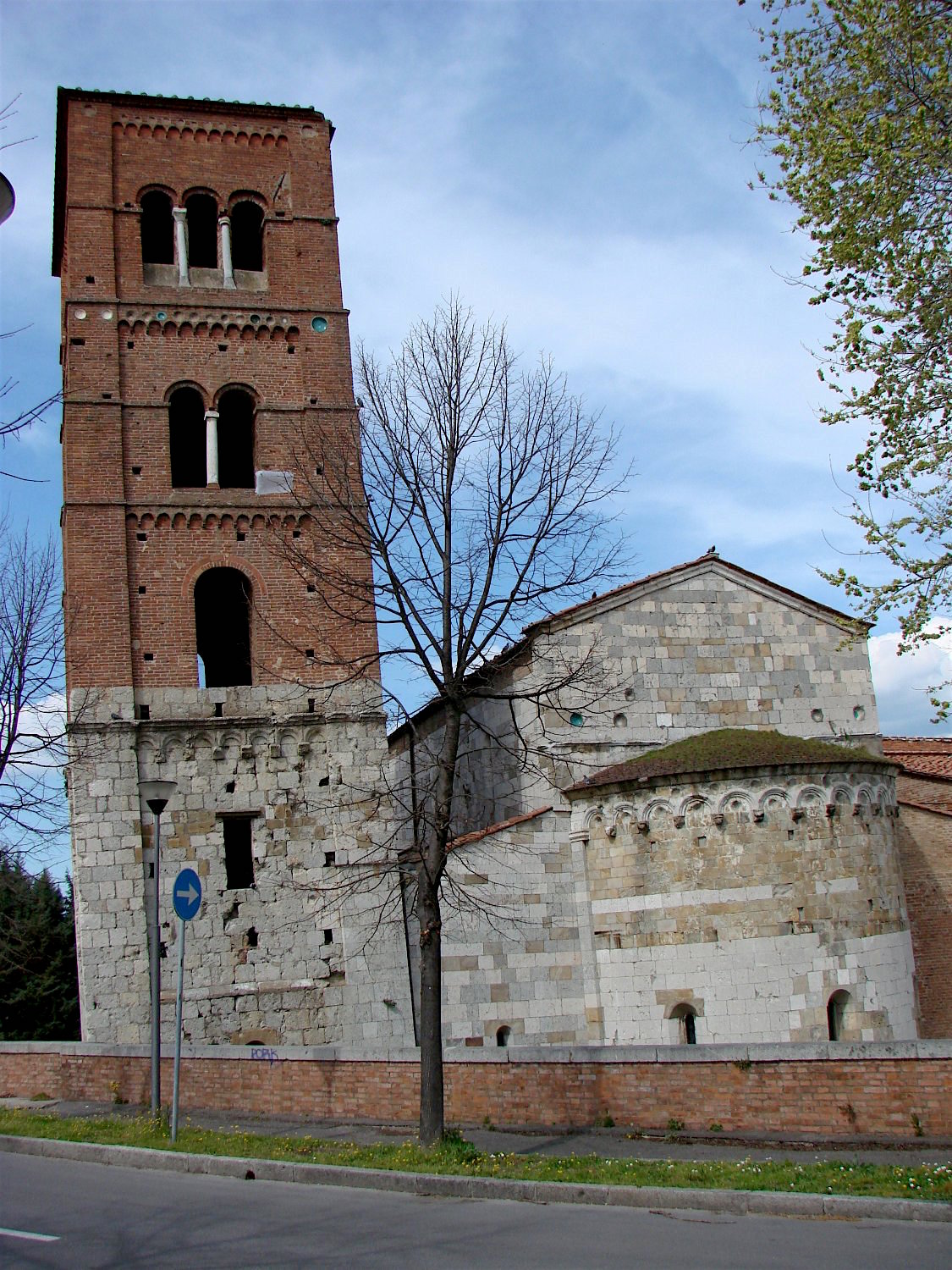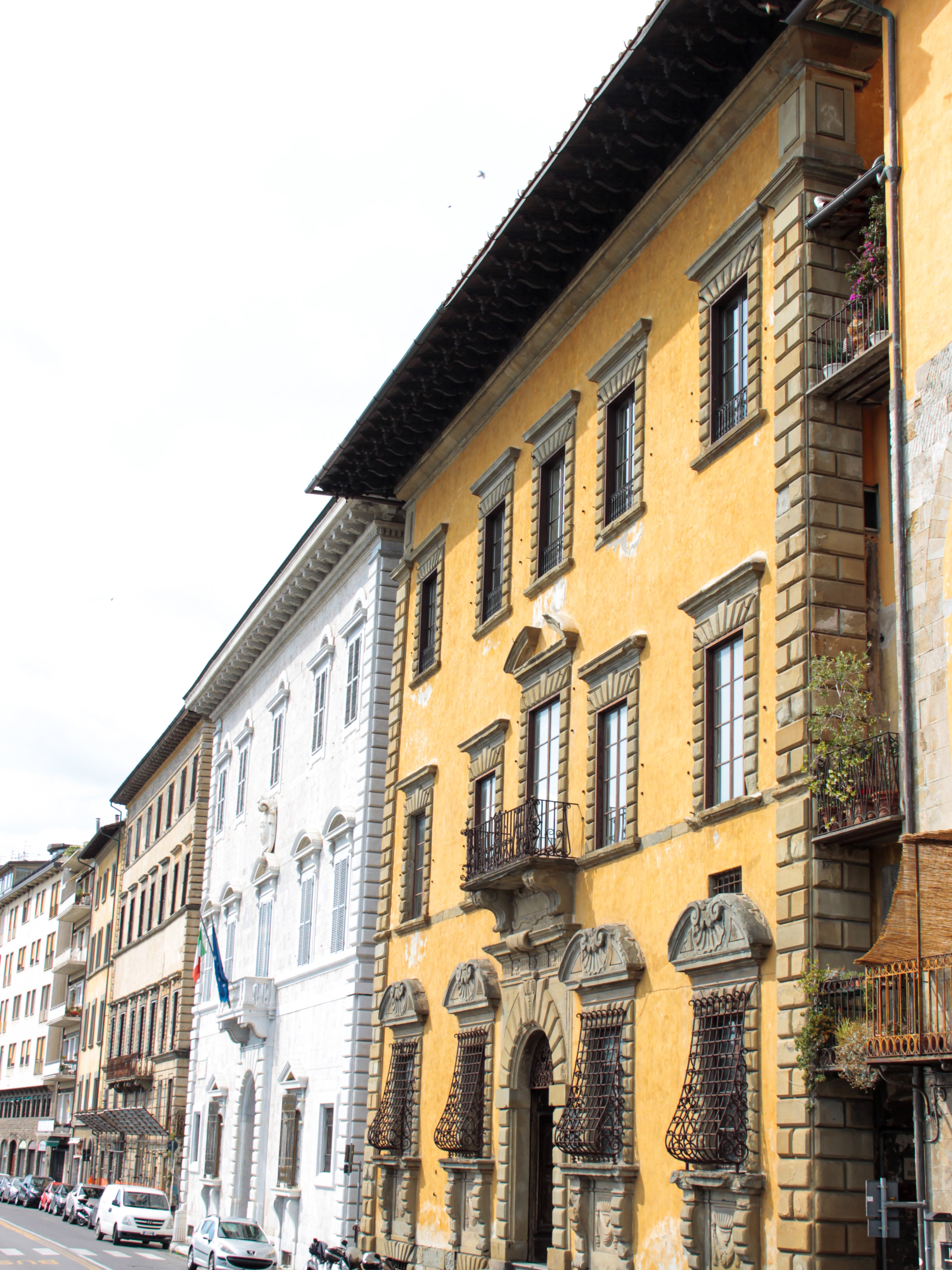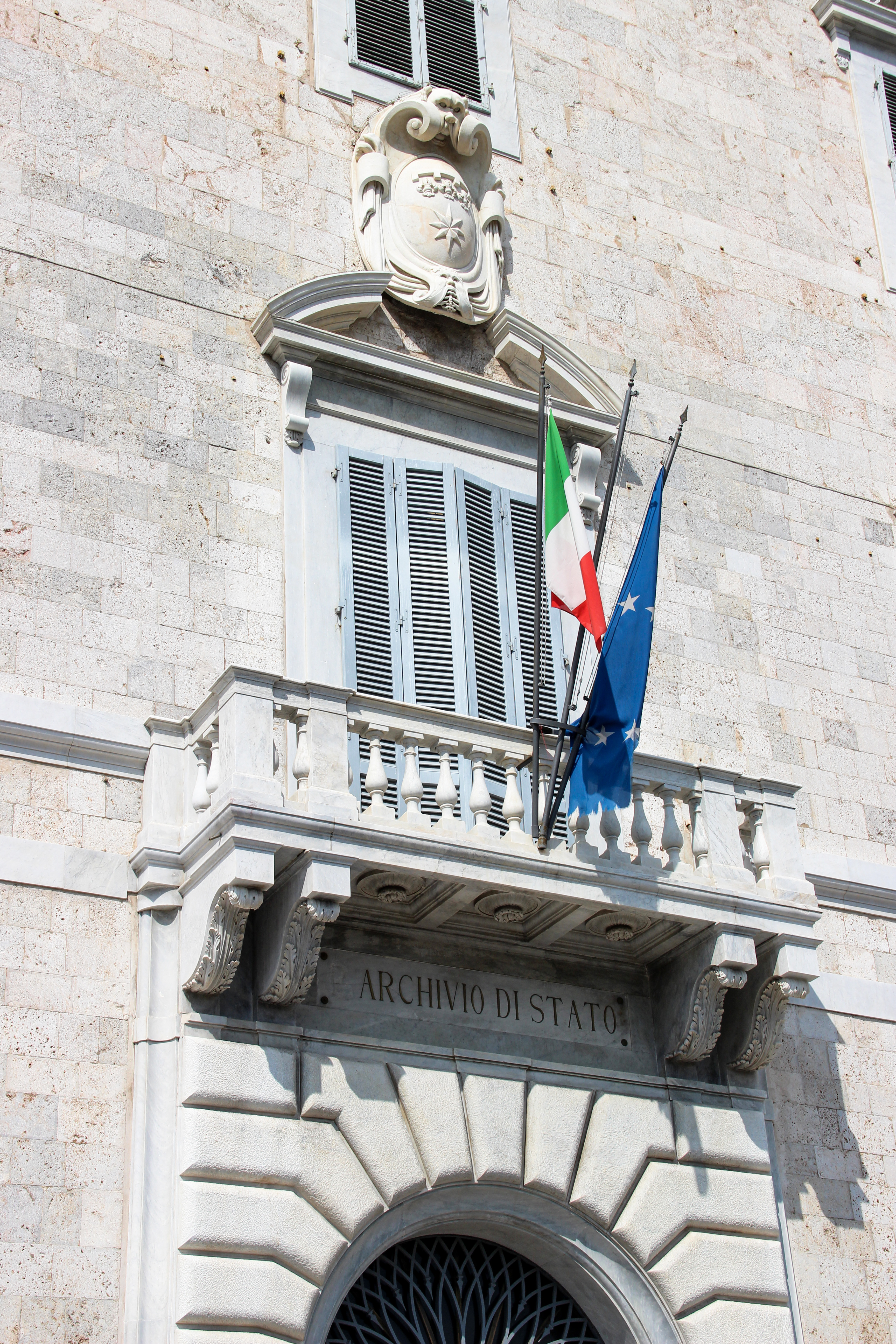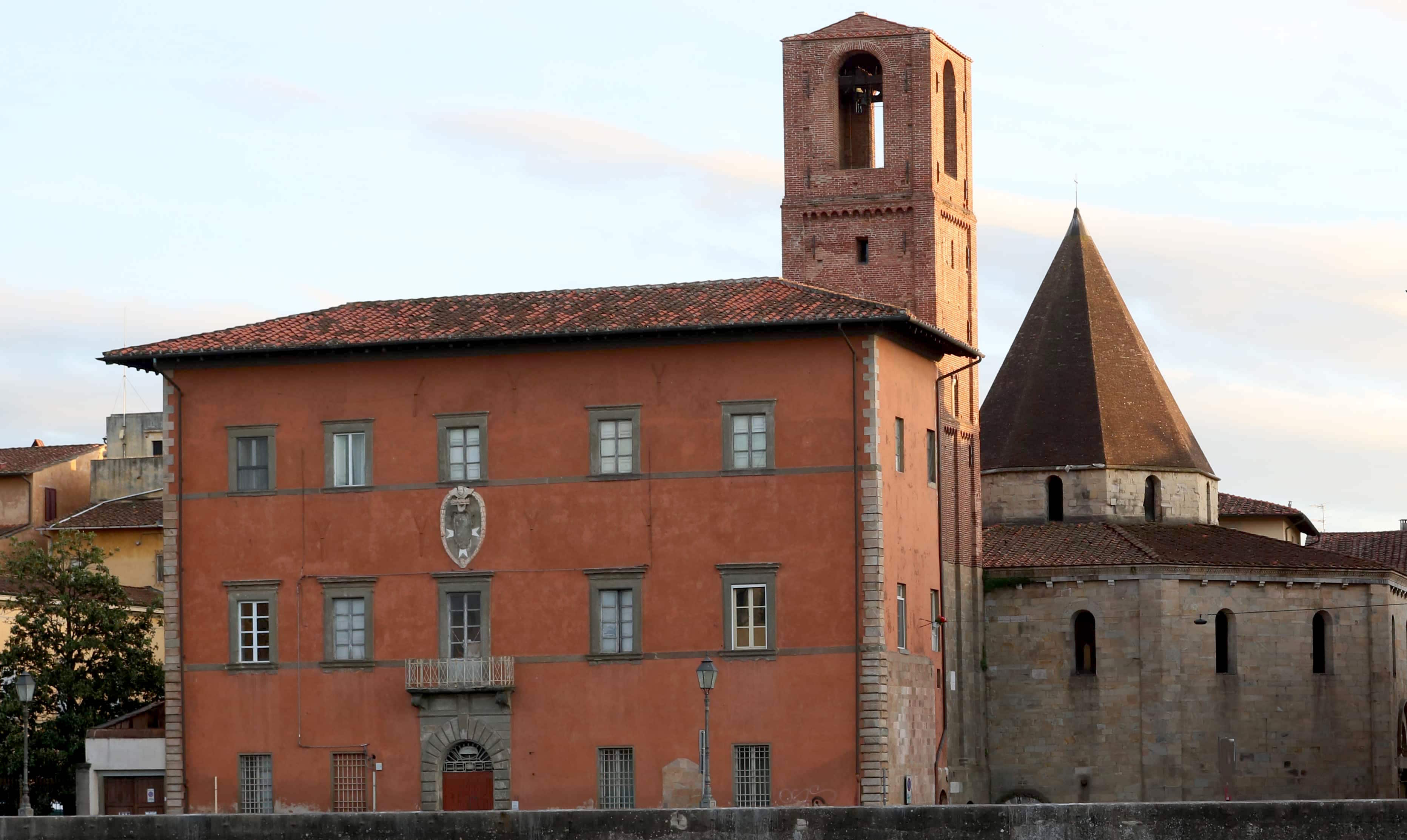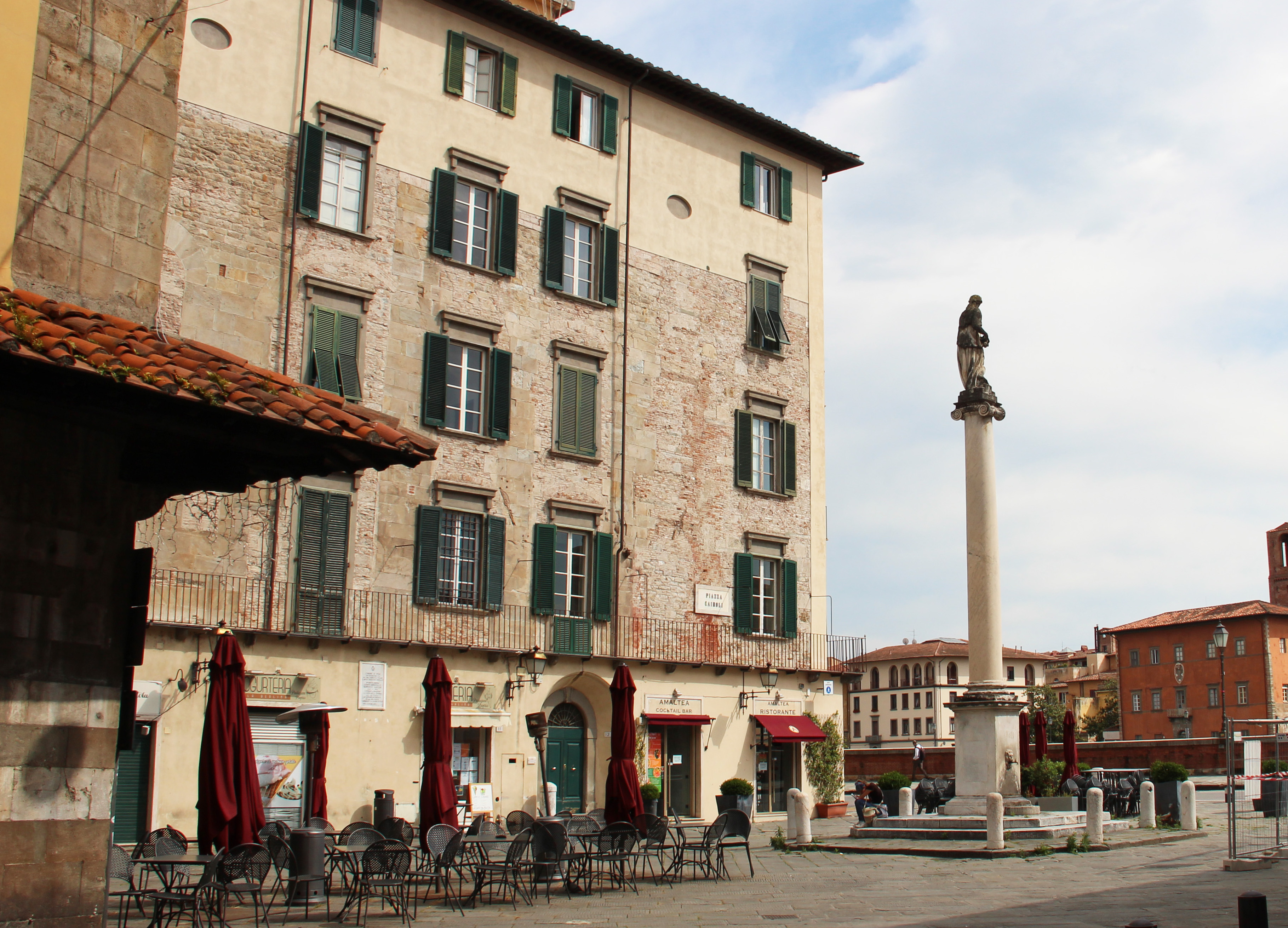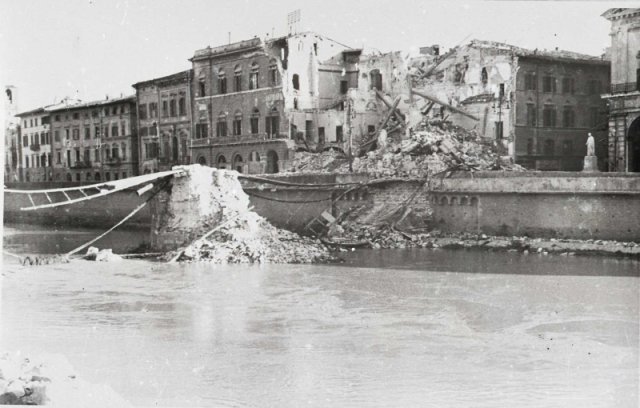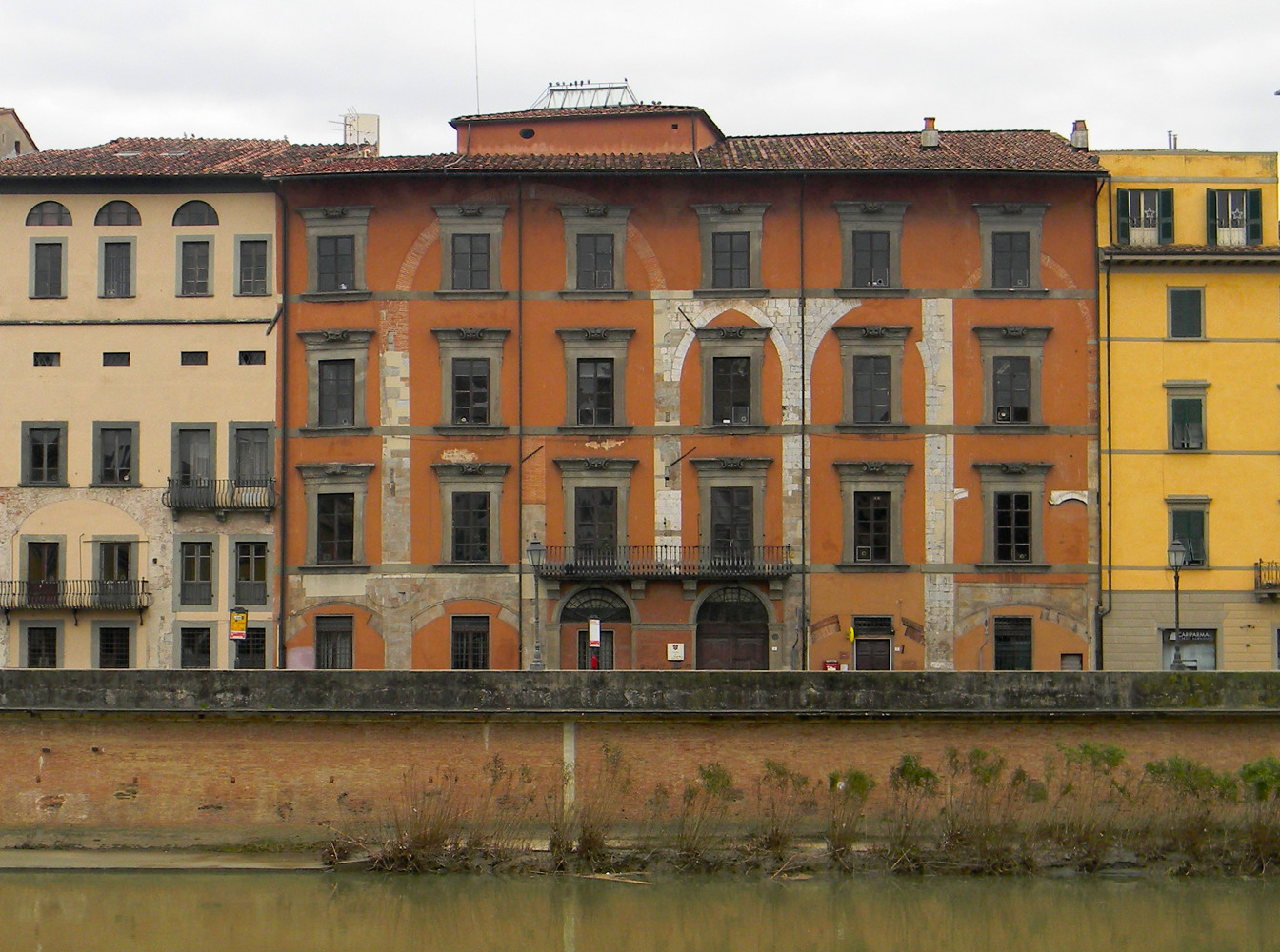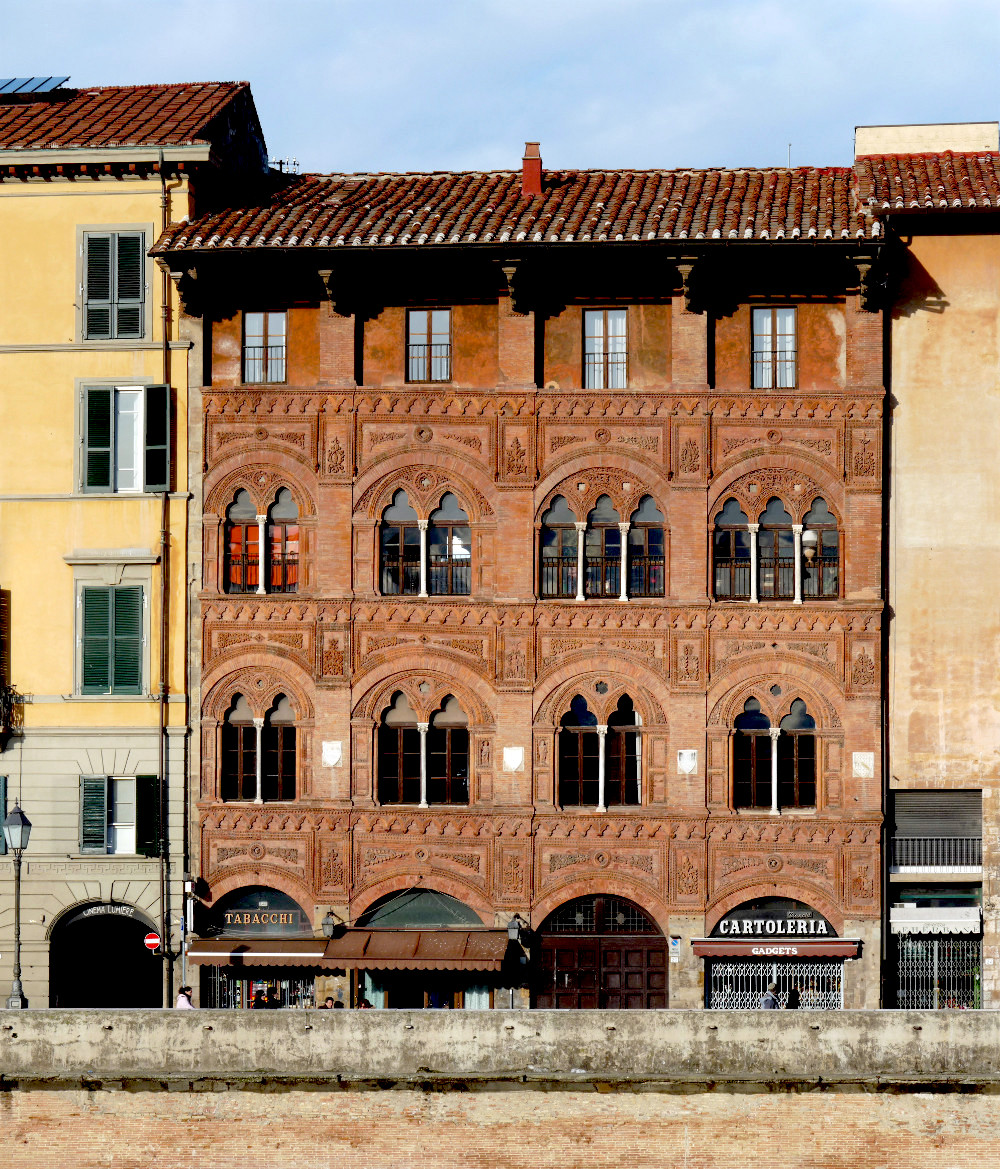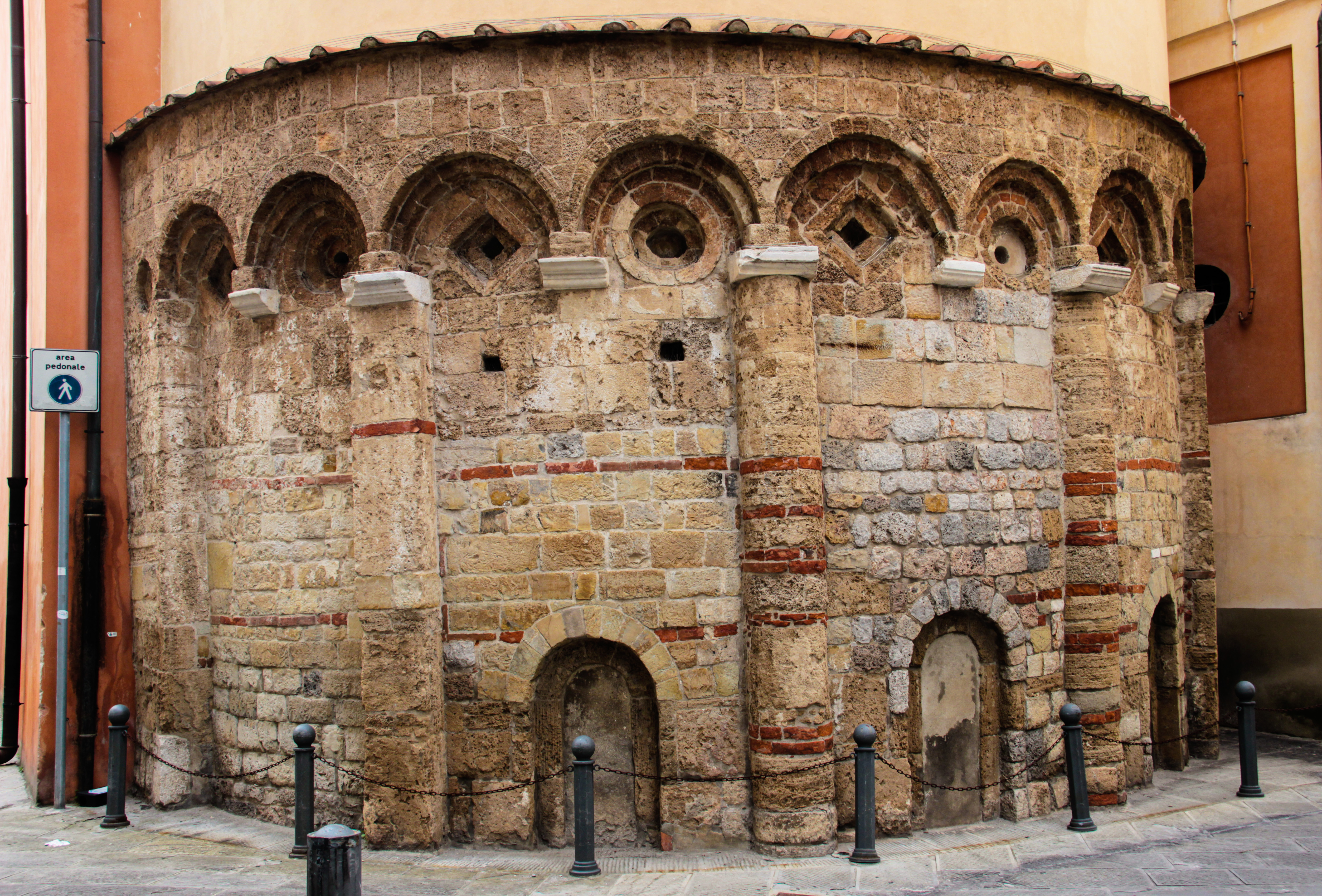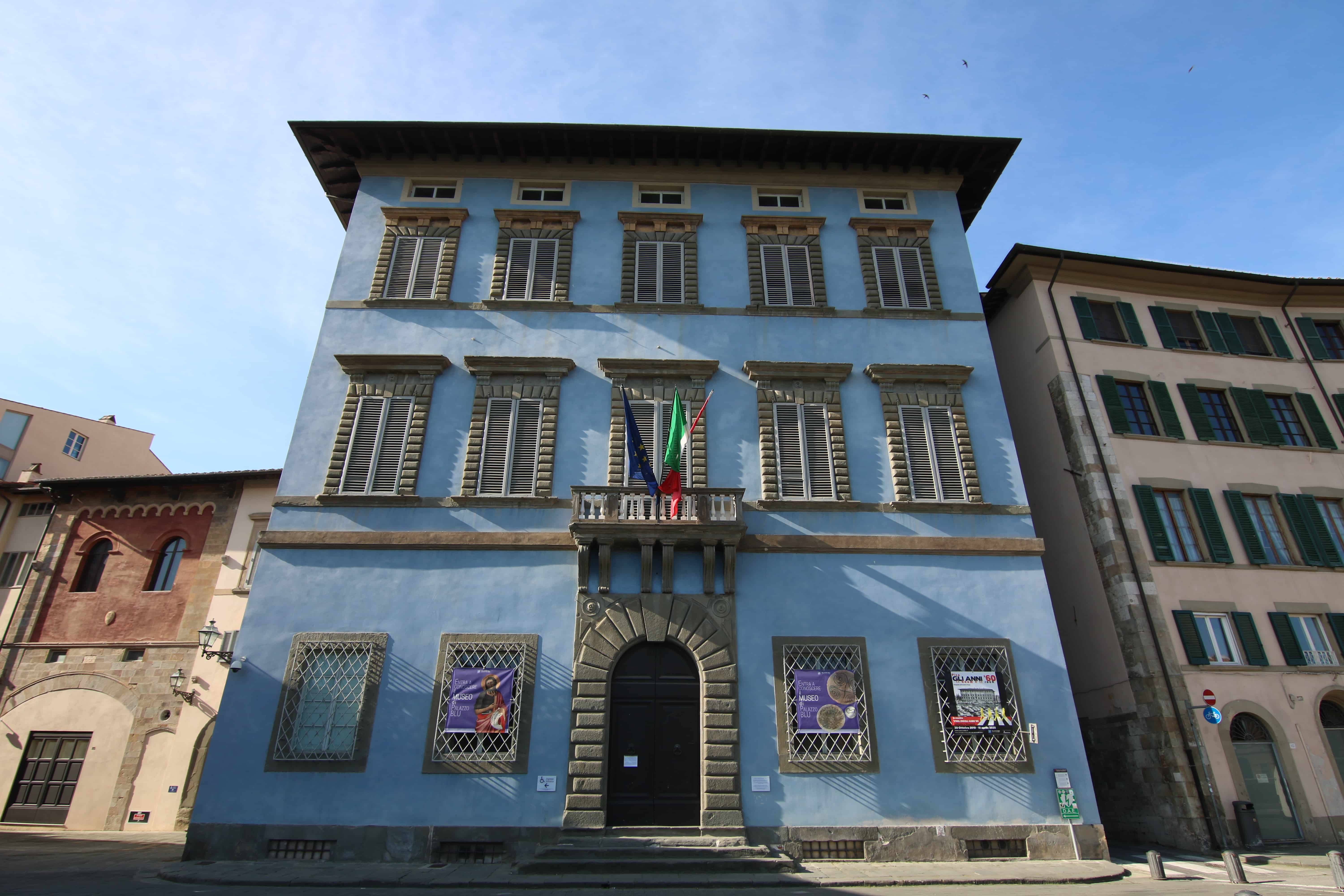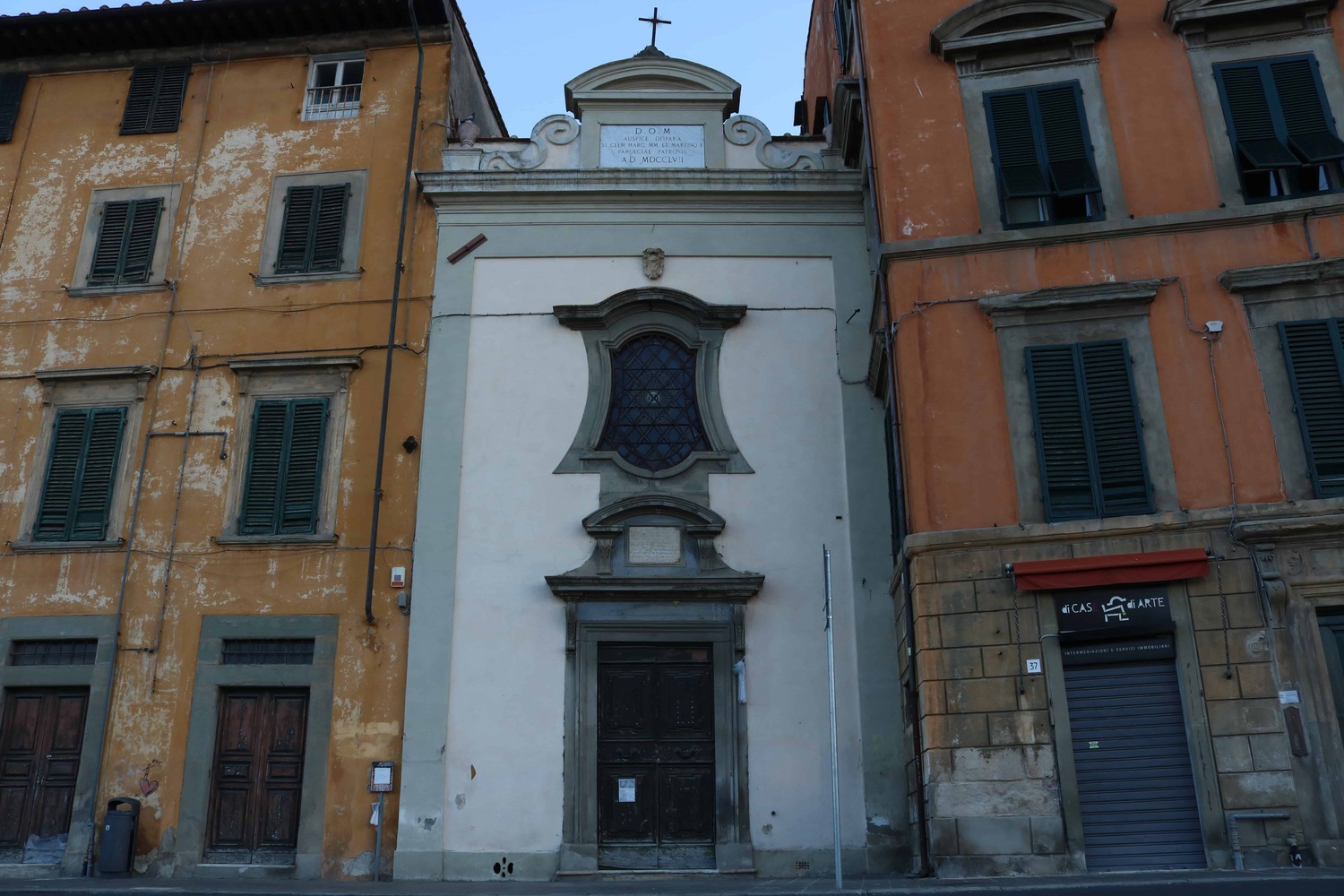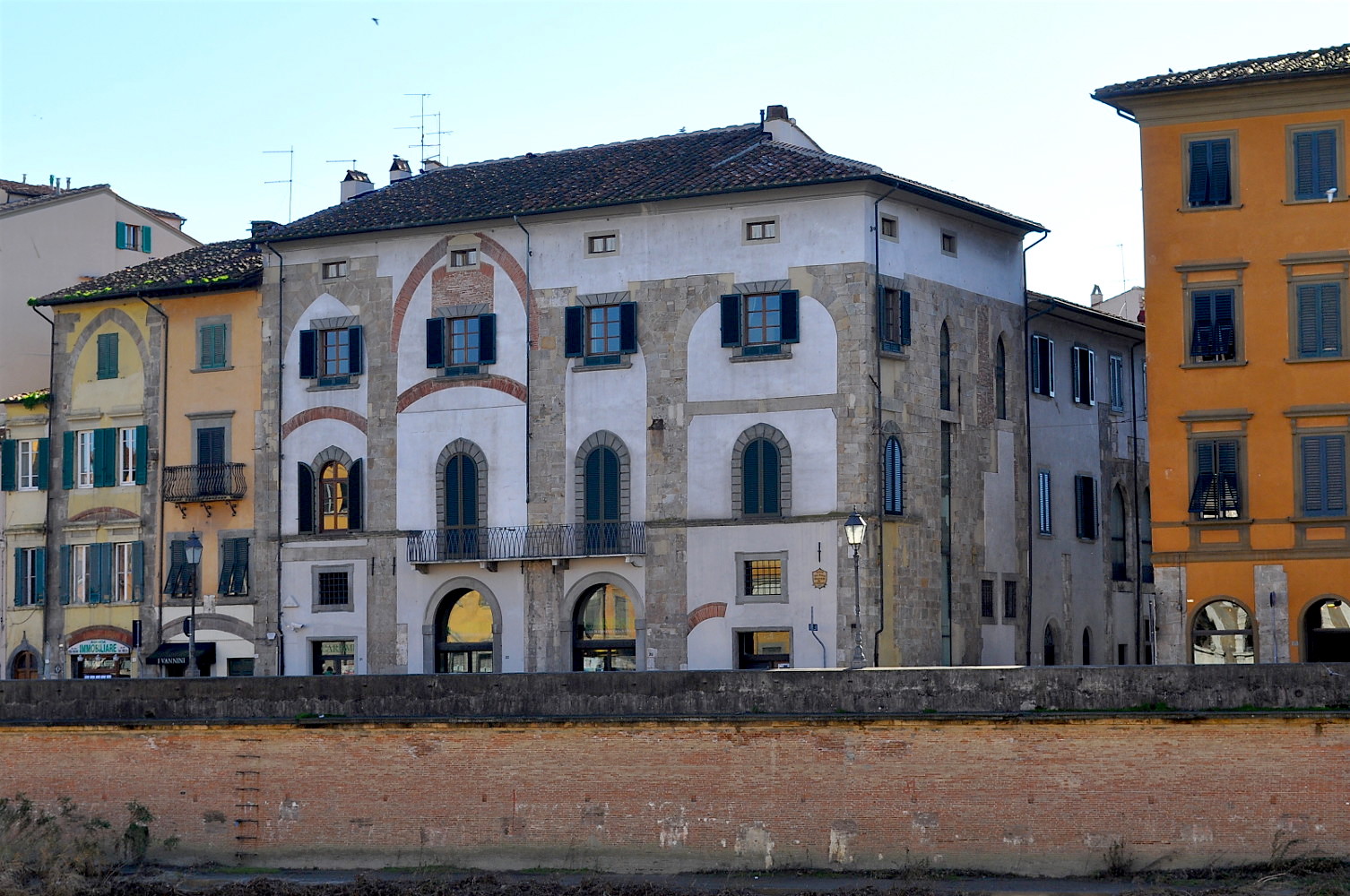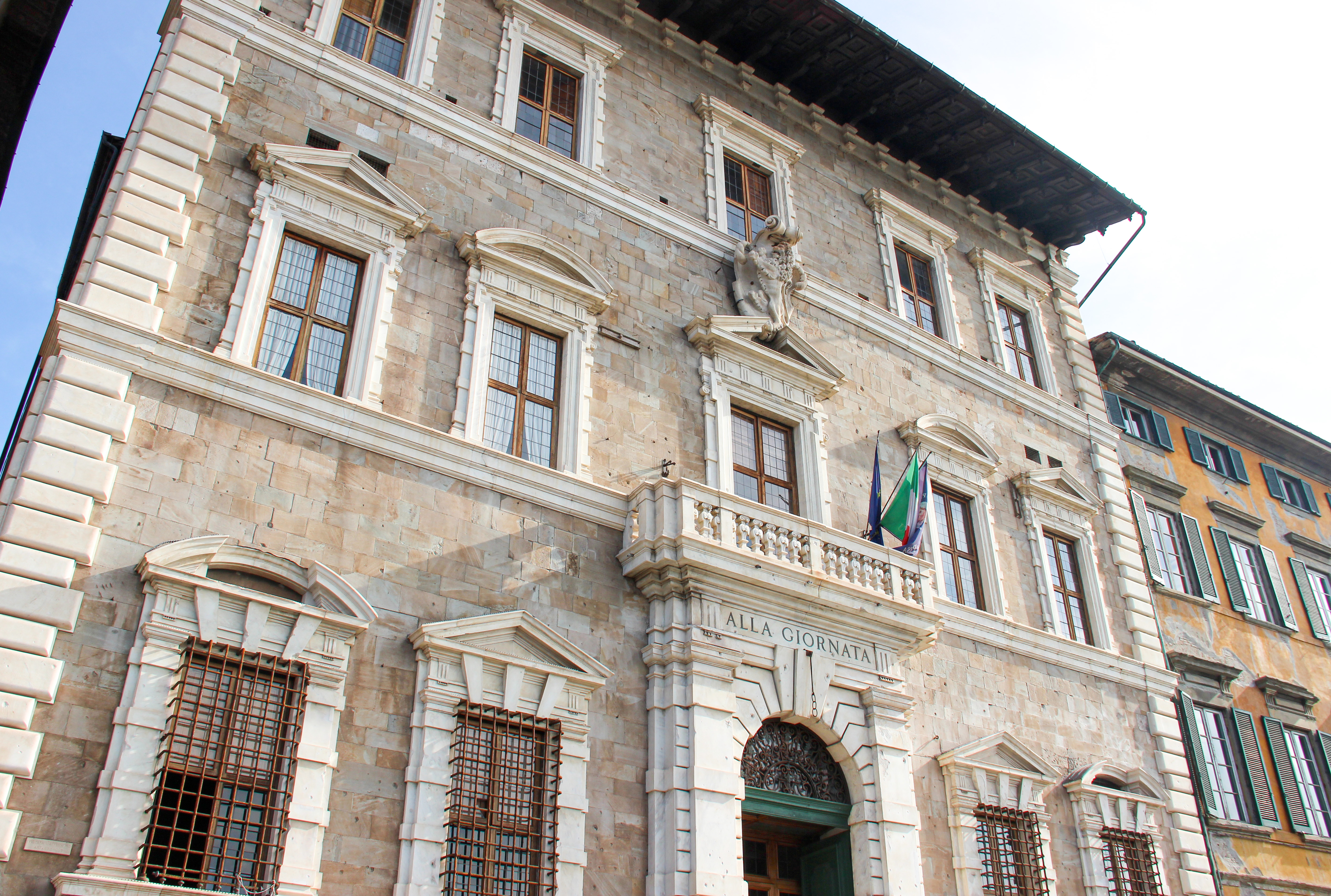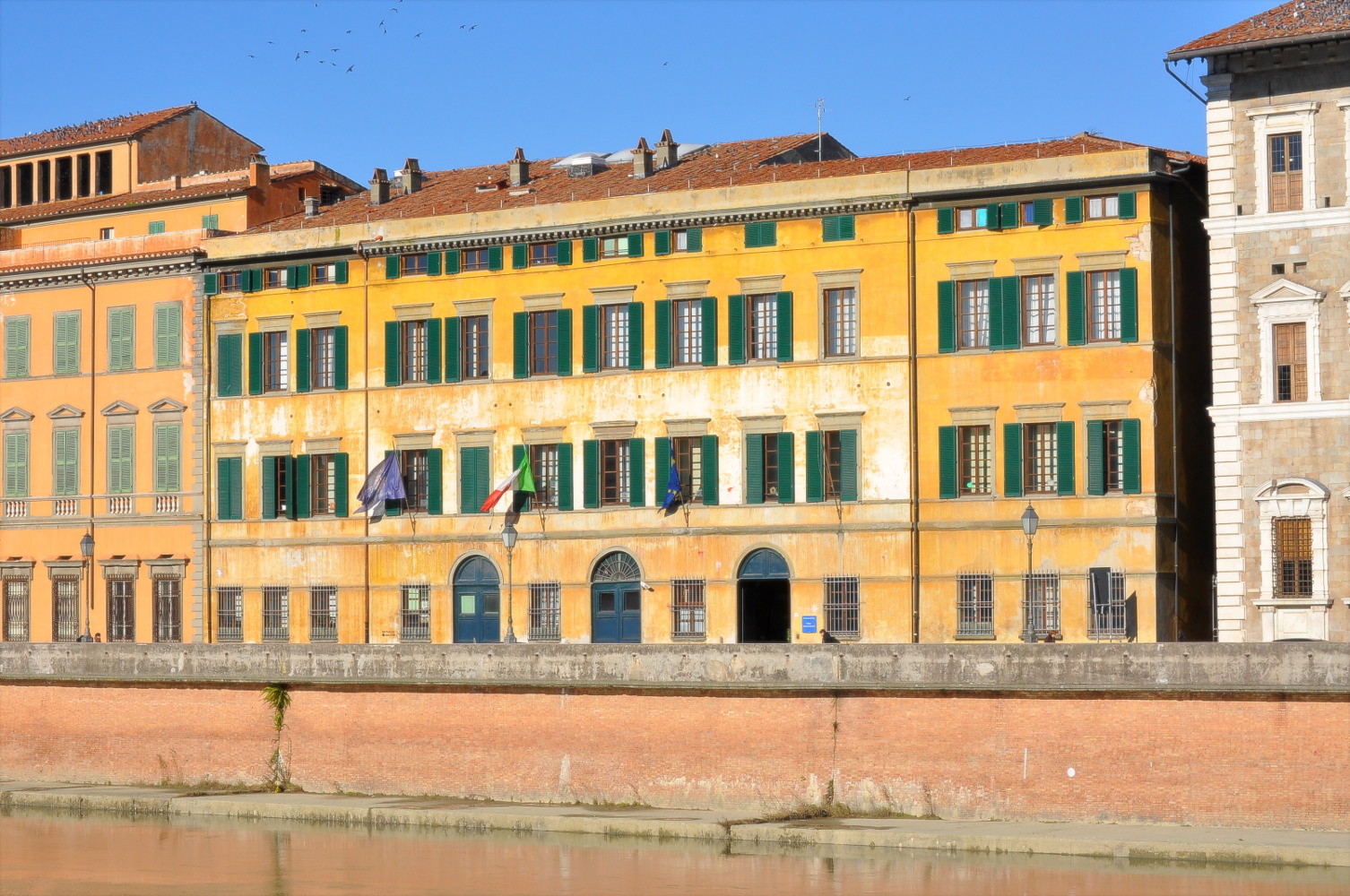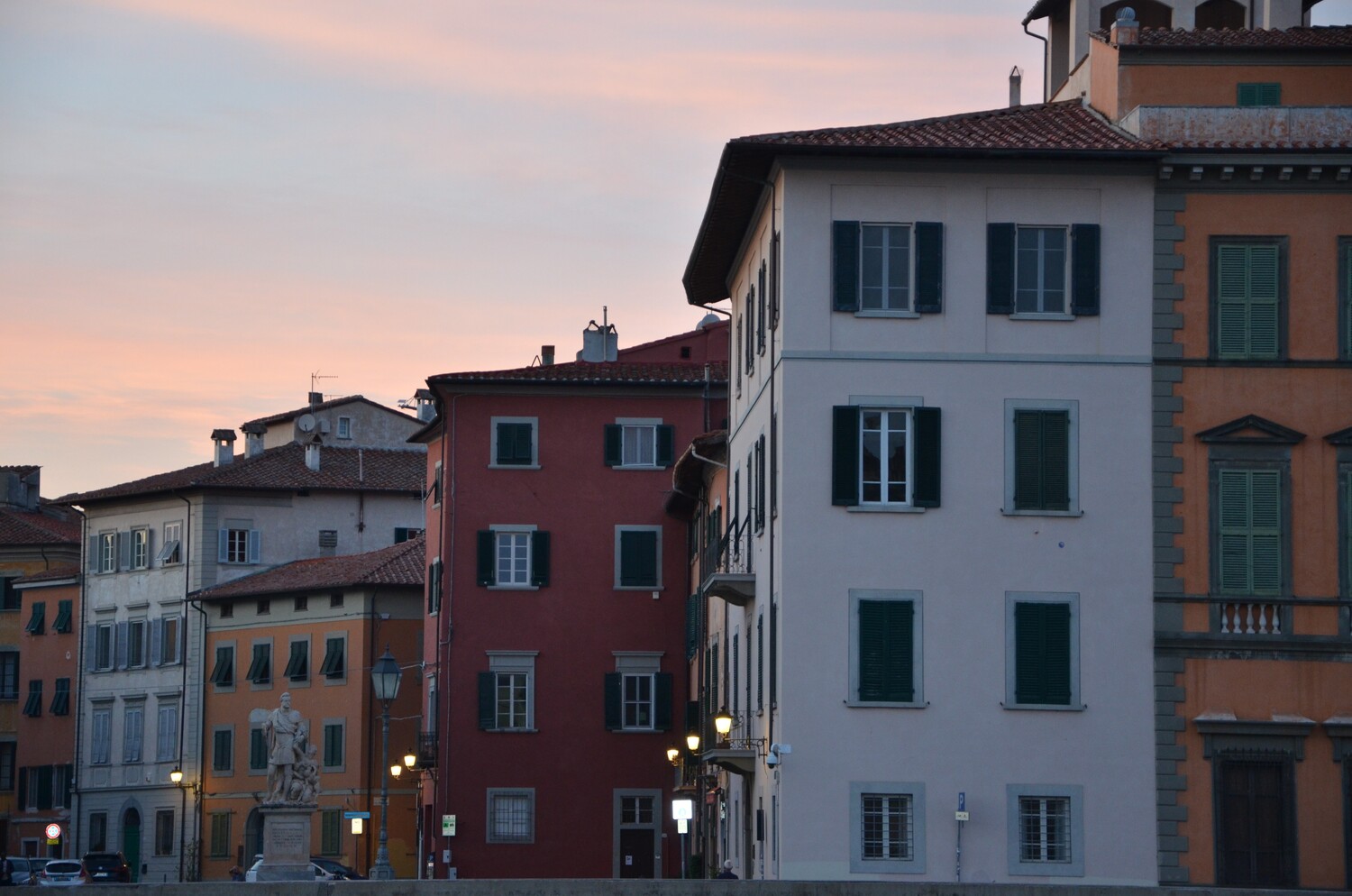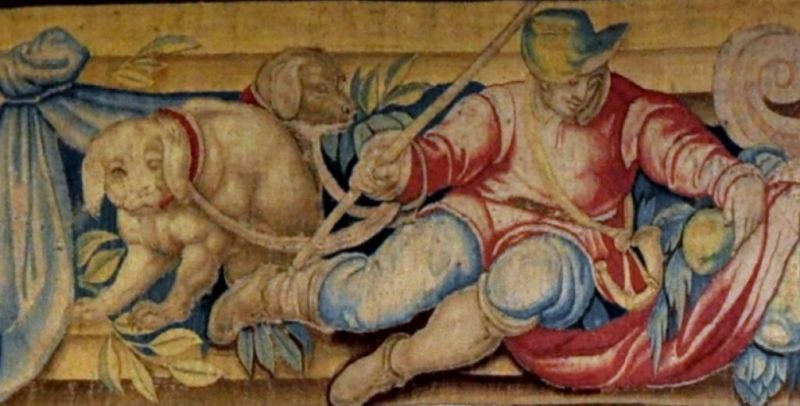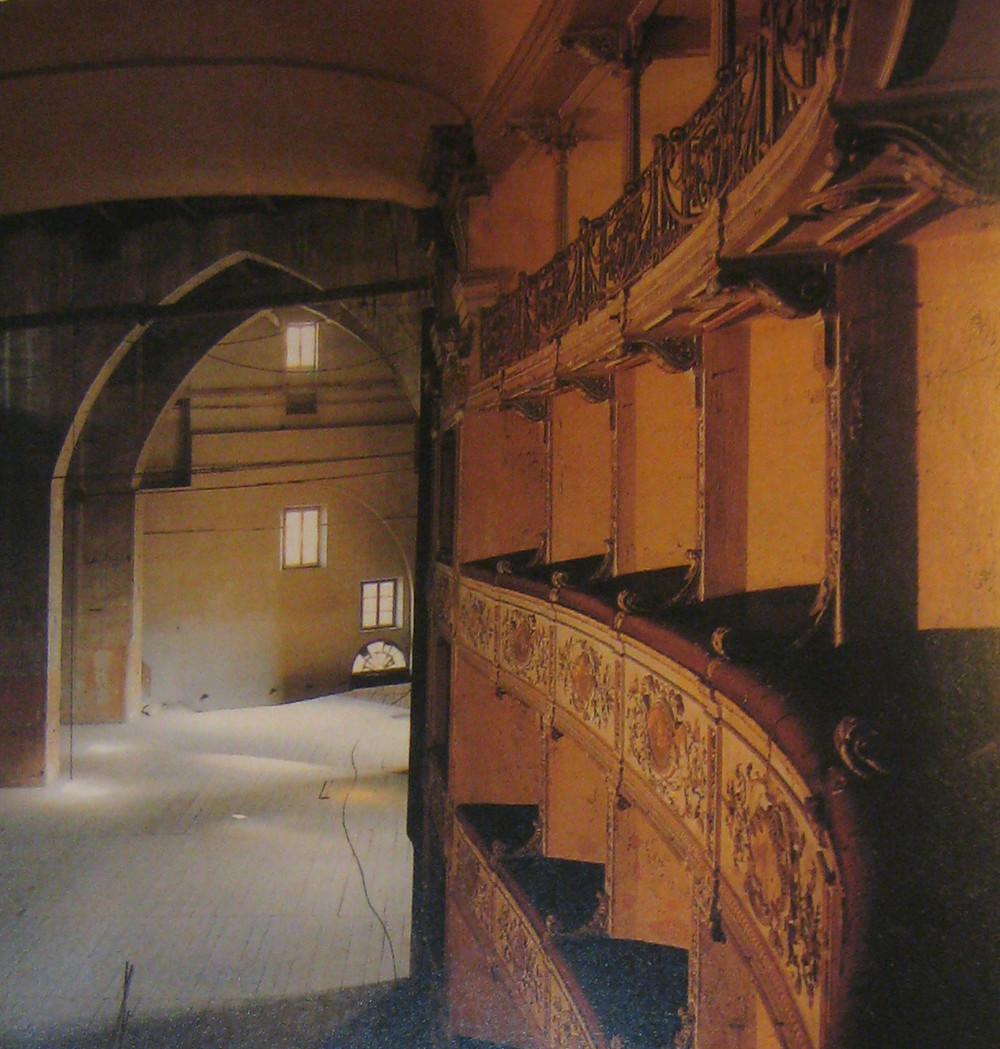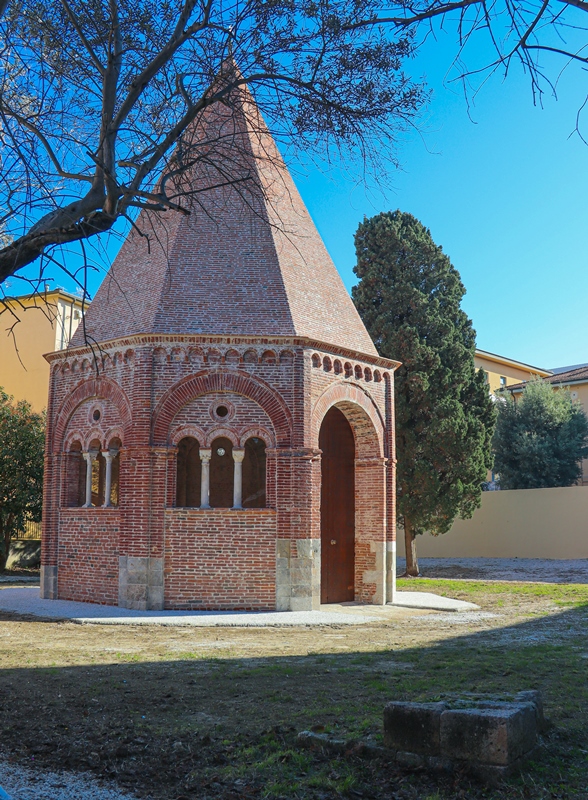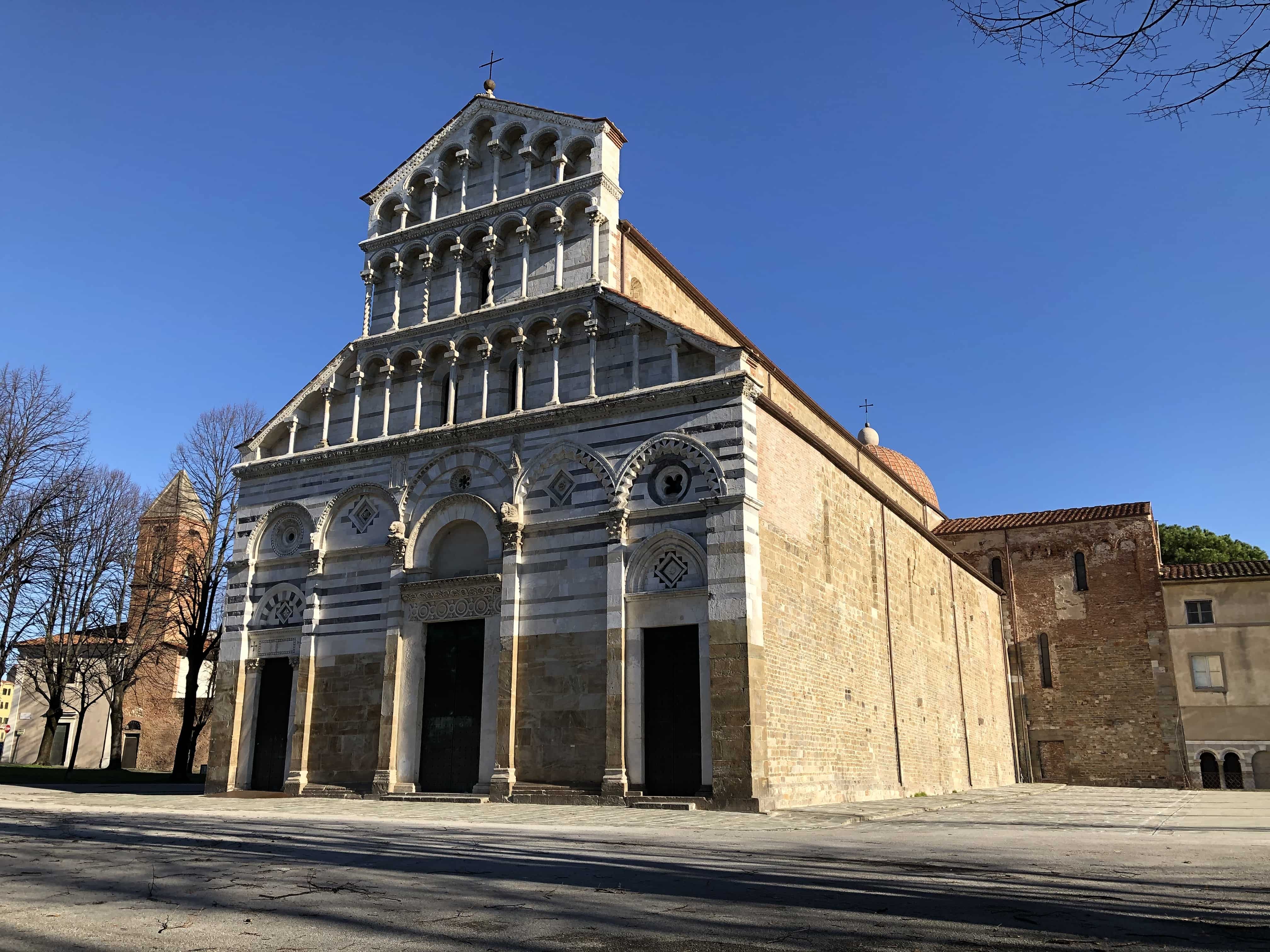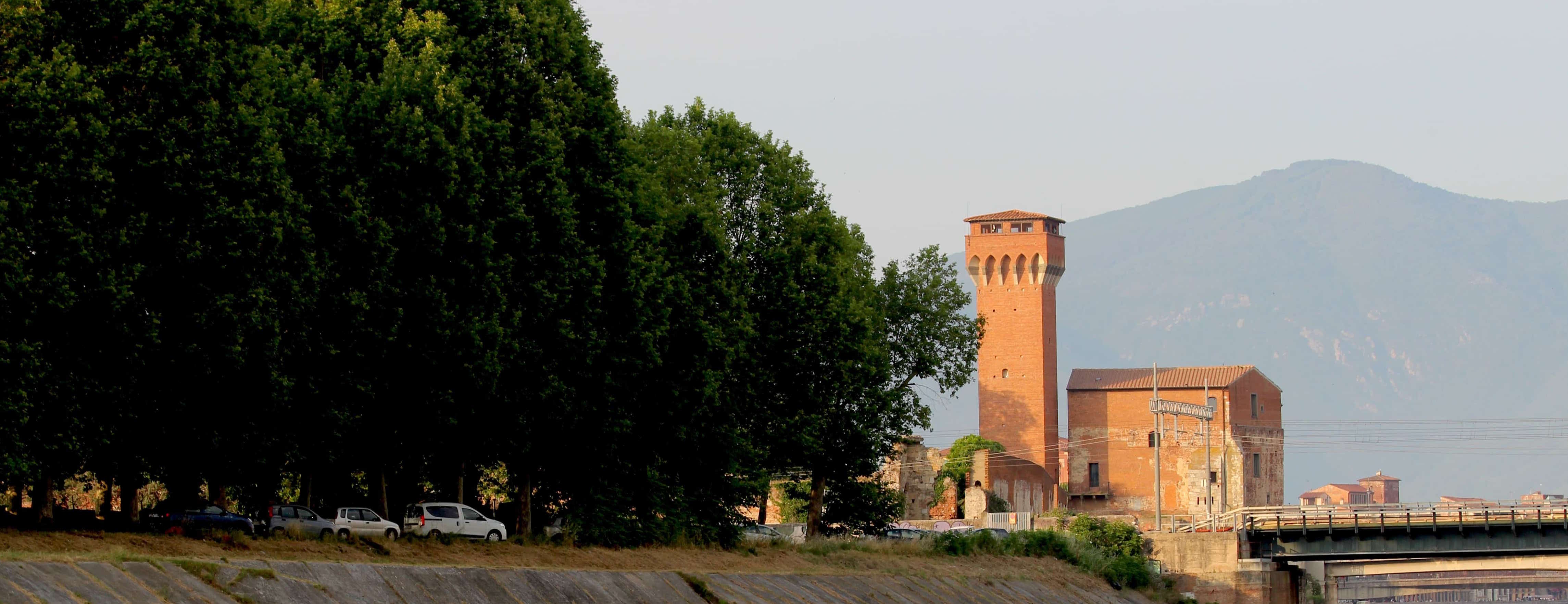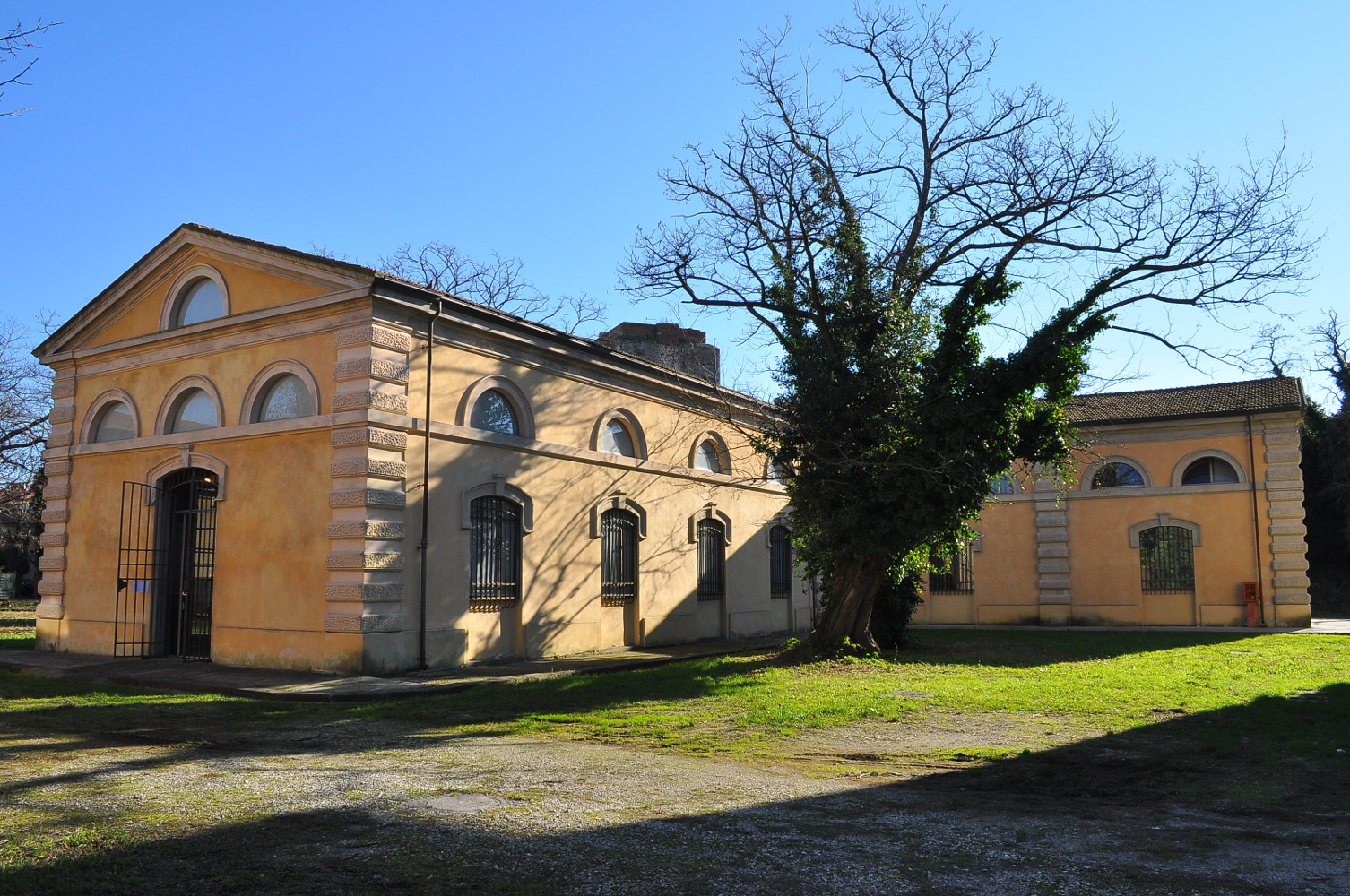Chiesa di Santa Croce in Fossabanda

The place-name Fossabandi, now changed to "Fossabanda", derives from a ditch, dug during the middle ages to drain the marshes in the northwestern area just outside the city. The ditch, already mentioned in 1034, took its name from Bando, who commissioned it to make the area more healthy. The monastery of S. Croce, where in 1238 we meet the Dominican nuns, was built here.
The building, constructed by the Dominican nuns during the 13th century was quite elaborate. By 1297 there was a church and an annexed convent. During the 14th century, the nuns employed Bartolomeo da Cantone, Prior of the convent of S. Caterina in Pisa, to completely renovate the buildings, even though they had begun moving to the houses and church of S. Silvestro in 1332. They continued to use S. Croce for spiritual retreats until the early 15th century.
In 1426 the convent passed to the Observant Minors who re-structured it. They added a 15th century porch with a colonnade and capitals surmounted by a pediment to the facade of the church, A cloister was built in several stages on the south side of the Church, complete with four arcades and a gallery on the floor above. Traces of a 16th century fresco can be seen in the lunette.
In the Church, as well as several 17th century canvas paintings, there is a particularly interesting painting on wood with gold background of the Madonna and Child with Angels Playing Musical Instruments, by the Portuguese artist Alvaro Pirez di Evora, active in Pisa in the early decades of the 15th century. Under the porch and in the church and cloister there are many commemorative stone plaques of various periods. The cloister has now been converted into a hotel.

